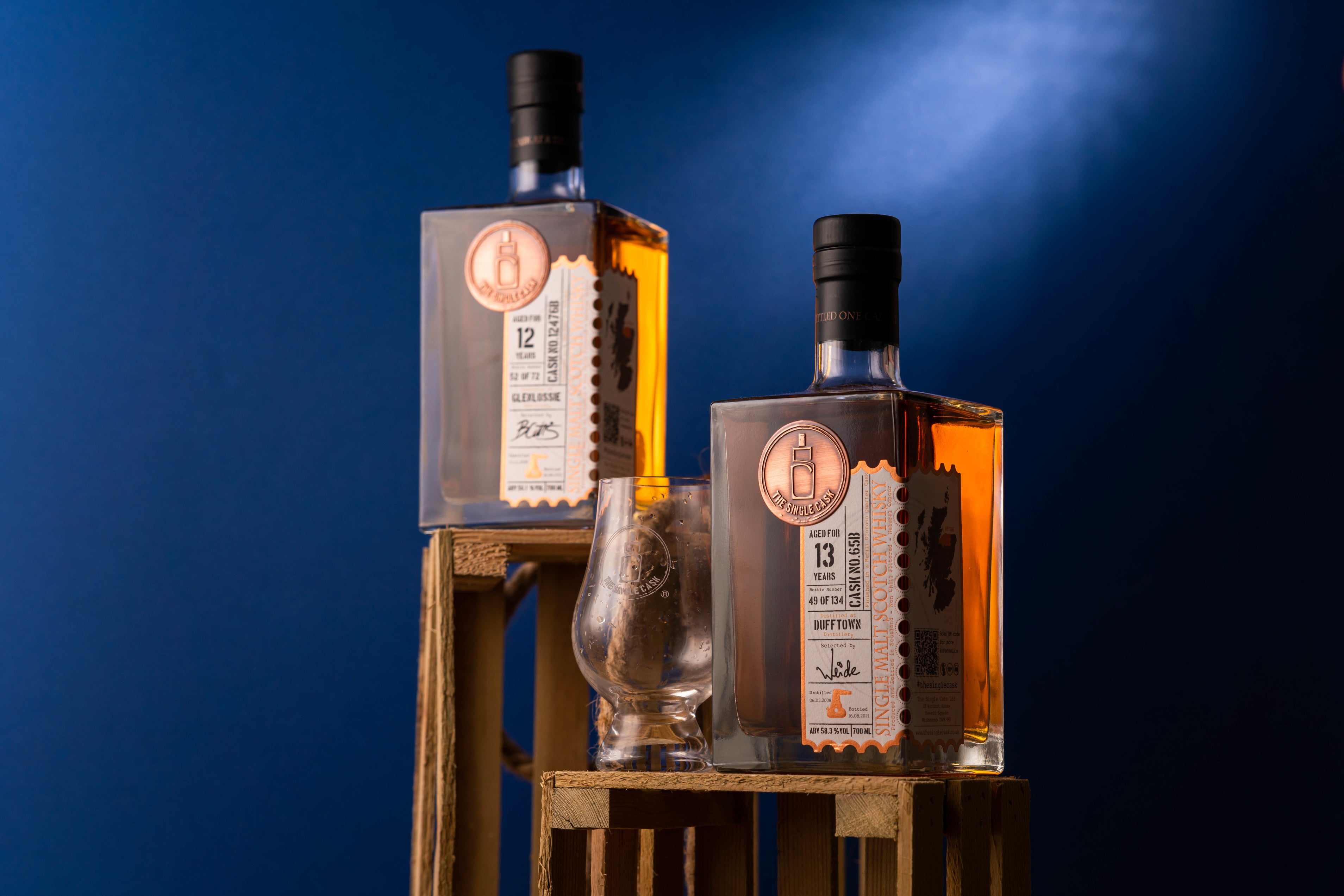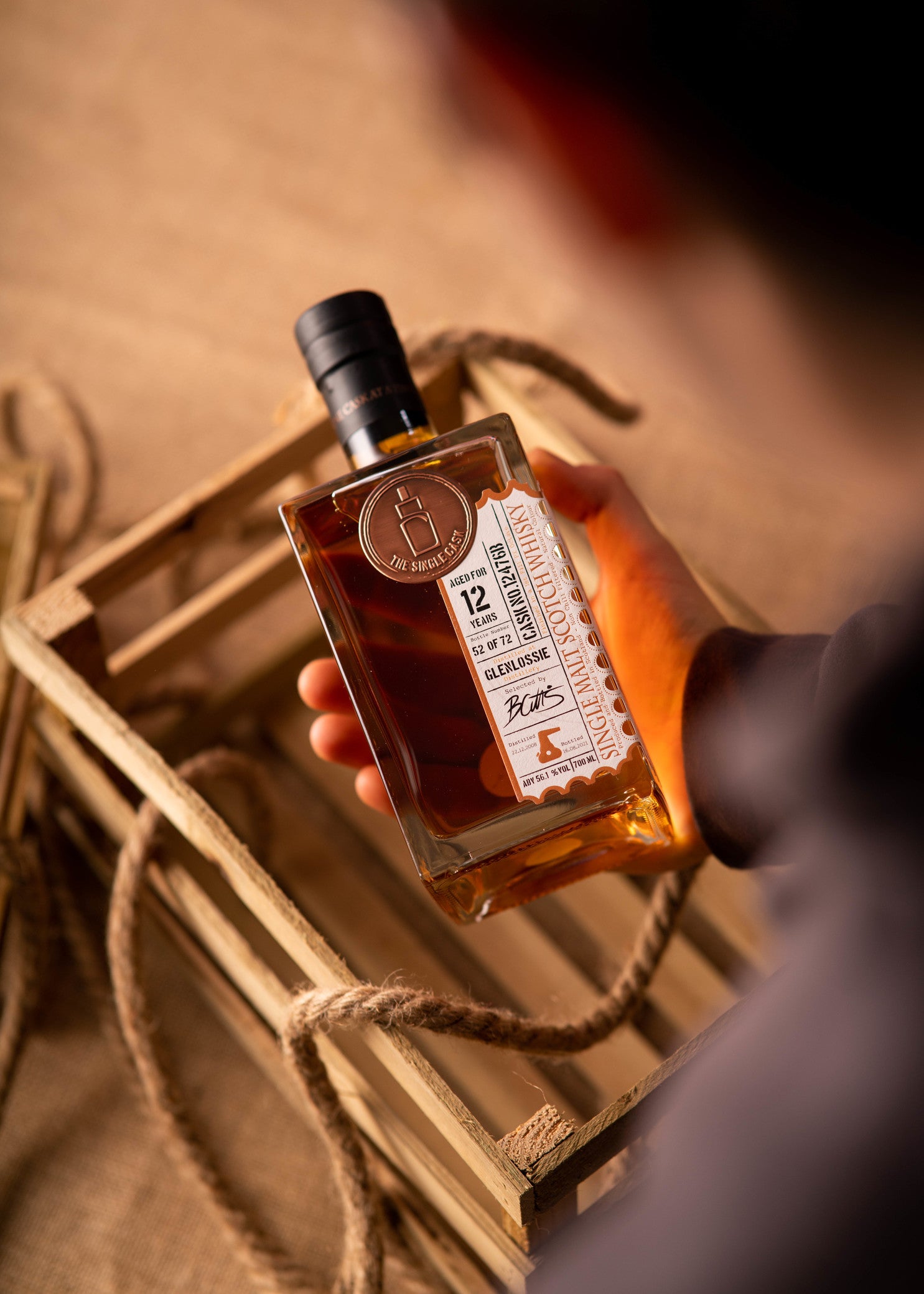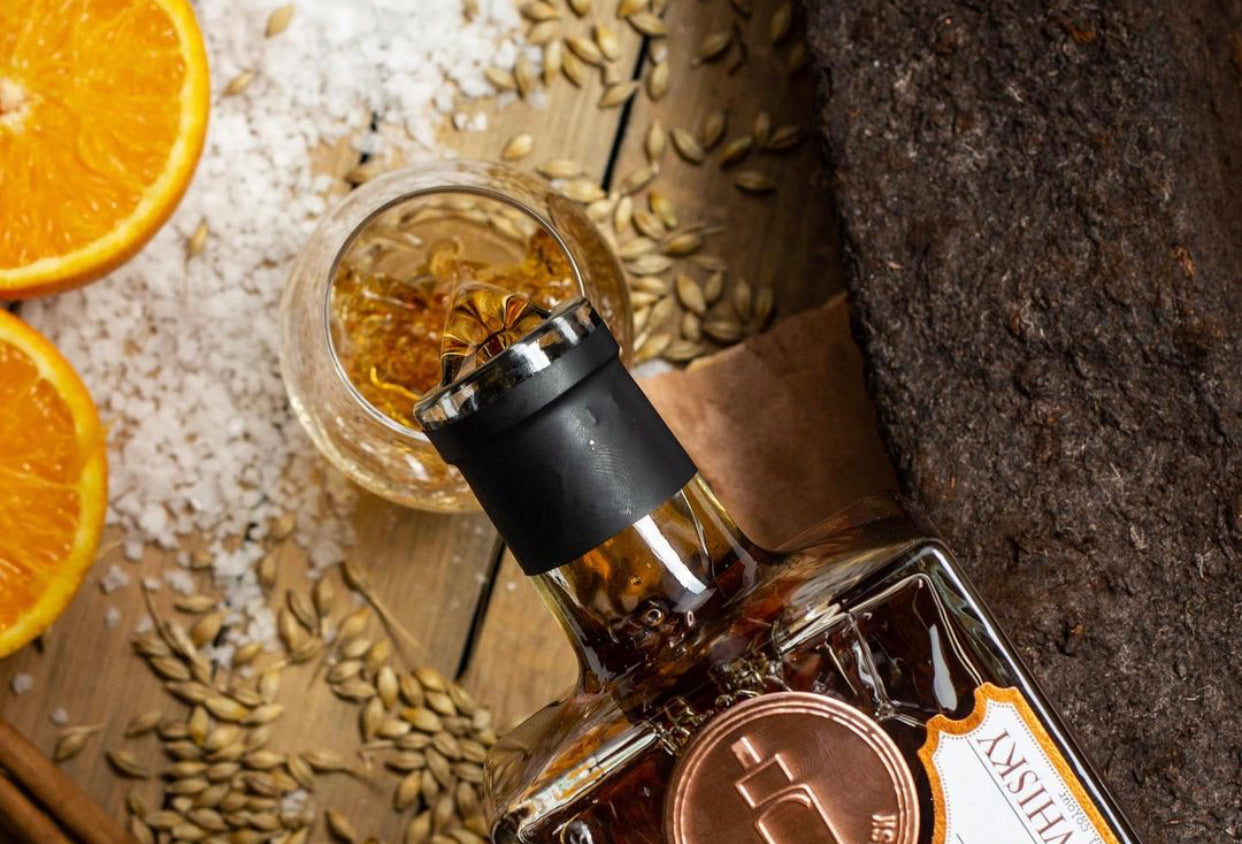
What kind of whisky casks are there?
Maturing whisky in casks
Over the last couple of years we’ve been bottling a greater variety of casks, not just in terms of which distilleries they come from but also the ‘type’, or size, of cask.
Just as you’d imagine, there are a multitude of factors that will all have an impact on how the whisky develops over the course of its maturation, from colour and aromas to flavours. Most people are aware of the distinctions between whiskies aged in old bourbon casks and those that previously contained sherry; in these cases, colour is one of the most noticeable indicators, but the overall flavour profile will also be very distinct. Beyond previous contents, however, are a number of other considerations such as the size of the cask, the type of wood and even the degree to which it was charred or toasted…
If you've looked at any spirit safe during distillation, you'll have observed that even the final spirit (often known as the final cut or 'heart of the run') is still completely colourless.
All of a whisky's amber colour will be extracted from the cask during maturation.
As the ethanol breaks down, the wood and various tannins, and flavours, seep into the liquid. This will vary depending on a number of factors.
American standard barrels
A huge number of casks used in Scotland to mature whisky are known simply as ‘American standard barrels’, or ASB’s. With a capacity of around 200 litres and constructed from American white oak, these are used to mature American whiskey for a couple of years (or longer) before they must be discarded, as bourbon is only matured in newly constructed casks. Many are therefore brought over to Scotland for use with Scotch whisky, which is generally well suited to American oak after a bourbon has taken on some of the more powerful flavours.
Spirit intended for single malt whisky is sometimes given a little more care than that which is set aside for blending; when it comes to choosing what kind of wood to work with for their single malts, many distilleries use what is known as a ‘hogshead’ cask, which is slightly larger at ~250 litres in capacity. The different surface area to volume ratio in comparison to an ASB will yield subtly different results. This requires the American barrels to be re-worked, with the staves from five ASBs being sufficient to construct four hogsheads.
American barrels are deconstructed into their individual staves to make shipping easier. When they arrive in Scotland, specialist coopers will construct new hogshead casks by painstakingly re-assembling these pieces into a viable new cask. This work has become more modernised over the years, but remains highly skilled. The new casks can be re-toasted to kickstart breakdown of the wood and help control the maturation process.
Sherry casks
Ex-sherry casks can come in a variety of forms. They may simply be hogsheads that have contained sherry before being filled with whisky, or they will be literal ex-sherry casks, such as 'butts' or 'puncheons', which are around twice the size of a hogshead!
Again, difference in size will determine the rate of maturation and evaporation.
As you might expect, the type of sherry will have an impact on the maturing whisky; typical examples are Pedro Ximenez like this Glendullan and Oloroso like this Glenlossie, but others such as Amontillado are also seen. Another difference is in the wood itself, with most sherry casks coming from Spain or France and therefore being constructed out of European oak, rather than the American white oak. This can have a profound effect, as European oak has different properties to its American cousin, including the levels of various tannins, lignins and cellulose. As a result, whisky matured in these casks tends to be darker in colour and richer in flavour, featuring intense dried fruits and spices.
Next time you try a dram from a single sherry cask, see if you can find out what size it was and which kind of sherry it previously contained. Colour is generally a good indicator of maturation in European oak, but it is by no means a guarantee. A cask that has been re-filled a couple of times will have lost much of that initial colour. This is why we go through such a painstaking selection process; sometimes what we expect having looked at a cask's details is not necessarily what we find in the glass! Which is what makes hunting for single cask whiskies so fun...
Quarter casks and octaves
On the other end of the scale we have casks much smaller than ASBs and Hogsheads, such as 'Quarter Casks' (the clue is in the name), and Octaves, sometimes known as 'Firkins'. These have a capacity of just 50 litres, meaning a lot more wood to each litre, significantly altering the rate of maturation as well as the way in which losses through evaporation will occur. In recent years, we've had some great experiments with these casks, yielding some powerful expressions at a young age. Though they may not be for the faint-hearted, past drams such as our Blair Athol #311432C and the mysterious Macduff highland cask #5233 have offering a great comparison to similar whiskies matured for longer in a larger, more 'standard' cask.
For us what matters is always the end result. We will have expectations for a cask given its history, type, whether it's a 1st fill cask or a re-fill, and so on. But ultimately, the way in which all of these factors will interact to finally produce a single malt whisky is very difficult to predict. For example, the specifications of our Teaninich cask #704321 didn't look too significant in a spreadsheet, but it turned out this particular barrel previously held spirit from Laphroaig, so we were suddenly intrigued to try it (and it turned out to be a cracker!).
Keep an eye out for any details you can find regarding the nature of a single cask whisky; it's always interesting to see how the various elements of its maturation have come together to produce something distinct, which is always greater than the sum of its parts. On our website, you can search for all the details one whisky hides, so stop waiting!- Dive into all the terrific bottles waiting for you.



Leave a comment
This site is protected by reCAPTCHA and the Google Privacy Policy and Terms of Service apply.